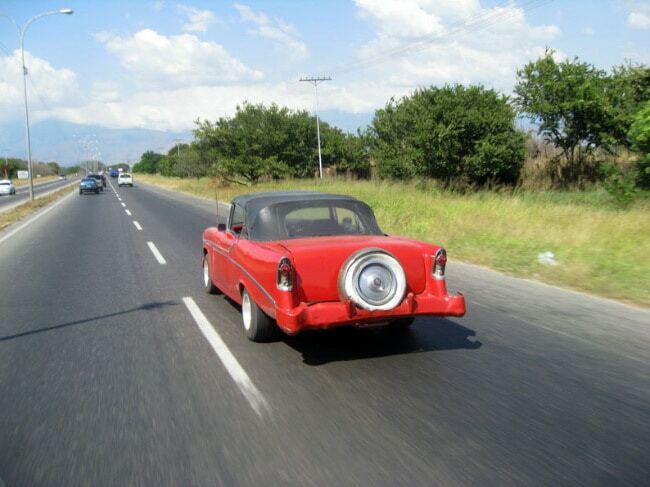Stop valves and plays a regulatory role in the anti-failure of the pipeline system. Its main valve and the valve elements have a difference in the structure, principle of operation, under the same operational requirements thereto. Knowing these differences will establish an element that will ensure the most efficient operation of the network.

What is meant by a valve
Valve - the locking element of the pipeline, which can not only block the flow of the working medium, but also to regulate it. Its design allows the controlled flow from maximum to complete its termination with a number of averages.
Design features in
Main parts:
- Housing. Most often, the cast, but there are models with collapsible sides. It has two holes, through which the liquid gas. Inside mounted locking mechanism. To mount the pipe system has two threads or flange mounting holes. The valve will be continuous, if these connections fastening located on opposite sides. By angular category includes valve with mutually perpendicular axes.
- Stopper device. Constipation - the valve system to the spindle, which are connected to the thread guide. form of the shutter valve is a needle and poppet.
- Flywheel. This is derived outwardly of the valve handle, creating a load on the threads. The rotation of the lever lowers and raises the valve.
Gaskets for high-quality slab used in some types.. When you open the valve plate breaks away from the saddle.

How to install
The fitting is installed so that the working fluid stream bent at a right angle twice in two parallel planes. In this case, the liquid or gas leaks below the tray than it creates pressure under operation "closed" side of the saddle. This pressure helps some separation of the plates from the seat when opening the valve.
Note! If the flow direction is reversed, then at the opening of the pressure will create additional load on the valve stem and can rip.
Types of shut-off valve device
By type of constipation valves are classified into
- Valve (Valve crane). It has two partitions, dividing the body into two parts. The barrier may be formed as a cone. Valve as part of the rod rests on a flexible gasket in contact with the seat. threaded connection twist raises and lowers the valve. This type of valve is designed for high-pressure flow, easy to operate, its locking mechanism can be easily replaced in case of breakage. The disadvantage is considered to rapid wear of the rubber gasket.
- Ball or faucet. The locking device is in the form of a ball with a through slot. The size of the slit is determined by the necessary fluid flow. To completely block the flow of the ball is moved so that the slot was oriented perpendicular to the flow. Such a valve loses its regulatory function.
What is meant by a latch
Latch - locking pipe member in which the shutter moves perpendicularly to the working fluid flow axis. It has the ability to just completely block the flow without adjusting function. The blocking valve member is moved upwardly - "open" down - "closed".

Design features of gate valves
Main parts:
- Housing. Manufactured by casting.
- The locking mechanism. It has a wedge shape, which lies in the upper part of the seat in the closed position.
- Flywheel. It has a handle with a screw connected with a wedge.
By turning the hand wheel, leaving the wedge down into the lower portion of the saddle with rubber seals and closes the passage opening. Due to the constant friction of the wedge seal, the latter quickly becomes unusable.
Important! Valve can be set independently of the flow direction in the pipe, due to the perpendicular orientation of the locking mechanism and the complete lack of resistance to movement of the mixture.

Material for the manufacture of valves
Distinguish the valves and the valve for installation in pipes in domestic (hidden) and outer portions. Common are constipation brass, bronze, steel, including stainless steel, cast iron. In recent years, widely used plastic valves. When selecting valves are guided by such factors:
- Brass and bronze manufacturing the most reliable, durable, functional devices. They are suitable for any type of combustible mixture. Well established valves of these materials in heating systems: due to lack of scale, there is no heat loss. The main drawback - high cost, which does not allow their use for large-diameter pipes;
- External piping sections, large diameter tube fitted with isolation valves of iron and steel. These materials are strong enough to withstand the high load line pressure, but it is much cheaper analogues of bronze, brass;
- The most common, and most preferably in the ratio of "price-quality" for the domestic water, gas, heating - stainless steel. In performance valves made of stainless steel suitable for installation on all domestic pipeline networks, even under high pressure. However, such overlap is not recommended constipation tube with hot mixtures. Inside the device eventually formed a scum that causes a decrease in the fluid passage;
- Budget option - plastic valves and fittings. Not recommended for use in industrial highways, on the outer areas of individual gas and water supply systems. Suitable for indoor use. Only installed on plastic pipes.

Common symptoms of valves
Gates and valves are designed to stop the flow of the working mixture in the pipes of various purposes. They can be mounted on the thread or flange. For pipelines with a pressure of 1.6 MPa functional, durable considered a threaded connection. Industrial engineering system with a working pressure of more than 10 MPa of iron (steel) elements overlap shutoff valves mounted on the flanges. Gates made of plastic are welded special welding.
The price of the cost of the material, design features, use additional components.
characteristic differences
In the general embodiment, the four main differences:
- The valve has an additional functionality in the form of fluid flow control gas. Latch only serves for closing the pipe;
- Gate valves are most often used for large-diameter pipes under high pressure, where they account for one-way pressure valve is very densely adjoins to a saddle. Valves in these conditions overlap pipeline faster and easier, but it is difficult to open. With strong hydraulic shock may become defective locking mechanism;
- Latches will fail, since the internal sealing seat ring wear;
- fluid supply blocking valve in the gas takes place in a parallel plane, and the latch - in the perpendicular;
- The price of the valves is higher.

All kinds of valves are have their own characteristics. Knowing what design differs from the valve gate, that option is selected which will provide uninterrupted operation.



